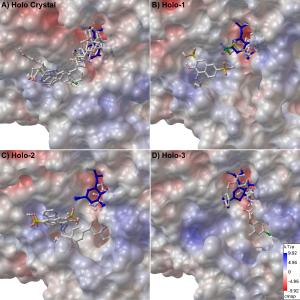Although a global outbreak of bird flu is lingering, public health officials understand that there is a desperate need for new drugs since some strains of the virus have already developed resistance to existing drugs

Now, a team of scientists from UC San Diego has isolated more than two dozen promising new compounds that could be used in the future against the disease. In some cases the new compounds are active at levels equal to or even higher than the levels at which the current drugs work.
"Once these resistant strains start multiplying then we will be in serious trouble because we don't have any active antiviral drugs against them," says Rommie Amaro, a chemist at the University of San Diego. "Therefore, we have to prepare something as a backup - and that's exactly why we're working on it."
Bird flu has caused a lot of concern because humans have almost no immune protection against this virus. Although vaccine compounds are being developed against the virus, it can take up to nine months for a compound against a new strain to be developed, and it can still be completely ineffective if new strains have been created during that time. If the virus acquires the ability to pass from person to person (something that has not yet been proven to date), the result could be a global outbreak or pandemic.
"Given the urgency of finding new drugs against this virus and its various strains, we hope that our results will help in this joint effort," says J. Andrew McCammon, head of the department of theoretical chemistry at the university. The research, published in the Journal of Medicinal Chemistry, is based on earlier work that was able to identify the movements, with an accuracy of a nanosecond between them, of the protein called "neuraminidase 1" (neuraminidase 1, N1), which is necessary for the bird flu virus to spread the infection to new cells.
To reveal the twitch-like movement of proteins, scientists use a molecular dynamics code that simulates their movement based on the basic laws of physics. The mathematical complexity of the calculations required for these simulations is so high that most scientists use supercomputers. In this case, the researchers processed their data with the help of molecular dynamics software called NAMD - which was developed at the University of Illinois and supercomputers located there. Several surprising results emerged when the researchers watched the protein curl and twist over time. In particular, it seems that one area - the so-called "hot pocket" - is very dynamic and flexible.
The lead researcher says that the topology of this region and the amino acids that make it up are fundamentally different from the researchers' previous observation in the still image of the crystal structure of the protein. "Crystal structures are very important," she says. "They give us a real picture of the protein. However, this is only one image.”
Over the last decade scientists have come to the conclusion that sometimes the colored structures resulting from their usual crystallographic studies can be limited. Instead of a still painting, the proteins behave more like a sequence of moving images that twist and shake regularly, a fact that makes the desire to find a specific inhibitor quite daunting. It is somewhat similar to the situation where a pitcher in baseball tries to hit the catcher who is doing somersaults in the air in his special position.
Molecular dynamics simulations have already proven valuable for designing other drugs, says McCammon, one of the pioneers in this field. For example, the route for the development of the drug raltegravir, an inhibitor recently approved in the USA against the AIDS disease, was also developed in this laboratory.
"The handling of receptor flexibility by molecular dynamics simulations plays a crucial role in understanding the mechanism of action of this new family of inhibitors," says the researcher, a professor of pharmacology at the University of San Diego. In their latest study, the scientists conducted a "virtual screen" of approximately 1 compounds selected from a pool of anti-cancer drugs, using a computer program called AutoDock, which predicts how small compounds, such as drug candidates, bind to a receptor with a known spatial structure. The goal was to determine which of the compounds best fits the suspected NXNUMX niche region. Generally, compounds that bind most easily to the target site are considered the leading candidates for future improvement and development as drugs. Five other compounds known experimentally to bind to the avian influenza virus were also reviewed, including existing drugs or those currently in clinical trials.
The results were extremely intriguing, with some 27 compounds showing significant promise, all with equal or greater binding capacity than other existing drugs, including Tamiflu and Relenza. Some of them seem like great candidates, Amaro says, because they bind to both the normal active site and an additional active site discovered in the computer simulations.
"The main idea is that we can prepare a better drug using the strategy of focusing on several active binding sites," says the researcher. "The importance of the research stems from the fact that about half of these compounds would have been abandoned based on the crystal structure alone. Many of these important compounds could only have been discovered using this computerized method." The research is now moving to the laboratory, where the compounds will be tested against the virus.

2 תגובות
You see how the field of bioinformatics is slowly pushing the legs of classical biology, there is no doubt that in the race against time to develop new drugs, accurate computer imaging becomes as important as it is and even saves precious time.